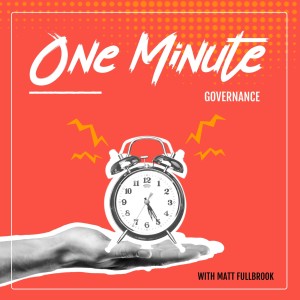
There are lots of reasons why boards get fixated on policies and by-laws and other procedural guardrails. One of the most common and, frankly, justifiable reasons is that there’s just. so. much. Stuff. To. Do. So much stuff. Even just the list of backward-oriented compliance and oversight tasks seems endless and is *so* time consuming. Most organizations I know wouldn’t even permit themselves the privilege of *dreaming* of a board meeting that runs on time, let alone one that built in a bit of wiggle room for something extra. The time crunch is real. Another word for time crunch: “urgency”. So much to do. And even when things seem like they might be getting better, it never lasts. It’s like adding a new lane to a highway: we know it’s a bandaid, and *SUPER* expensive, but solving the actual problem just feels too hard. I get it. In fact, I decided I need to dedicate the next handful of episodes to stuff that’s related to this urgency issue. By the time we get to episode 187, we may actually have identified the real cause of the problem here. You know, like the boardroom urgency version of under-investment in changing driving habits, mass public transit and infrastructure for pedestrians and cyclists. Back to the policies and by-laws thing, though: in my experience, boards often feel like having lots of well-defined rules is a good way to make meetings and decisions more efficient. Here’s one jerk’s opinion: rules that define who should be making what decisions and when: those are your friend. Rules that try to define HOW those people should be making decisions: generally not going to work out the way you think. Real life is just too messy.
More Episodes
 2024-09-05
2024-09-05
 211
211
 2024-08-29
2024-08-29
 183
183
 2024-08-26
2024-08-26
 162
162
 2024-08-19
2024-08-19
 181
181
Create your
podcast in
minutes
- Full-featured podcast site
- Unlimited storage and bandwidth
- Comprehensive podcast stats
- Distribute to Apple Podcasts, Spotify, and more
- Make money with your podcast
It is Free
- Privacy Policy
- Cookie Policy
- Terms of Use
- Consent Preferences
- Copyright © 2015-2024 Podbean.com





